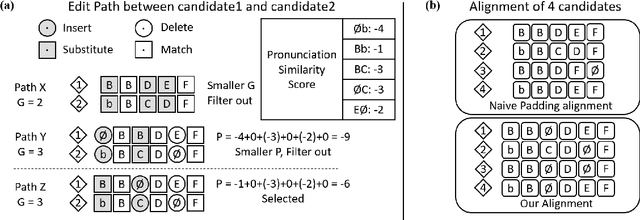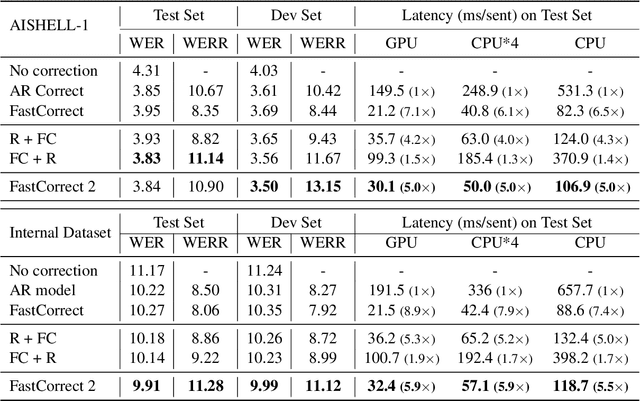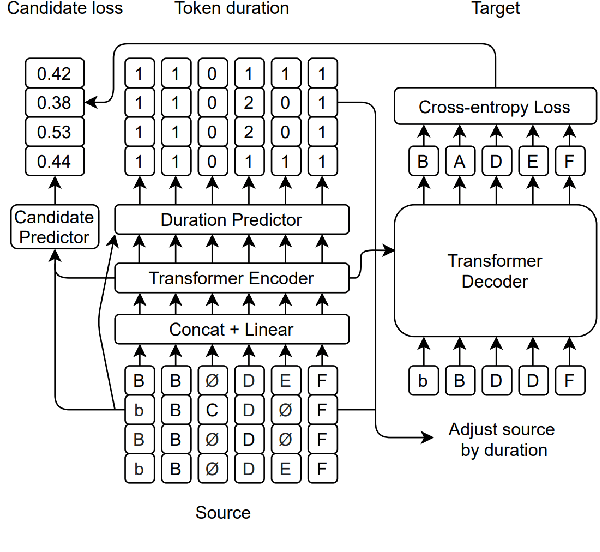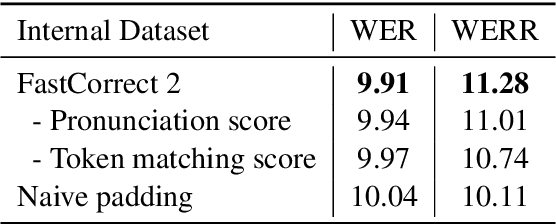FastCorrect 2: Fast Error Correction on Multiple Candidates for Automatic Speech Recognition
Paper and Code
Oct 18, 2021



Error correction is widely used in automatic speech recognition (ASR) to post-process the generated sentence, and can further reduce the word error rate (WER). Although multiple candidates are generated by an ASR system through beam search, current error correction approaches can only correct one sentence at a time, failing to leverage the voting effect from multiple candidates to better detect and correct error tokens. In this work, we propose FastCorrect 2, an error correction model that takes multiple ASR candidates as input for better correction accuracy. FastCorrect 2 adopts non-autoregressive generation for fast inference, which consists of an encoder that processes multiple source sentences and a decoder that generates the target sentence in parallel from the adjusted source sentence, where the adjustment is based on the predicted duration of each source token. However, there are some issues when handling multiple source sentences. First, it is non-trivial to leverage the voting effect from multiple source sentences since they usually vary in length. Thus, we propose a novel alignment algorithm to maximize the degree of token alignment among multiple sentences in terms of token and pronunciation similarity. Second, the decoder can only take one adjusted source sentence as input, while there are multiple source sentences. Thus, we develop a candidate predictor to detect the most suitable candidate for the decoder. Experiments on our inhouse dataset and AISHELL-1 show that FastCorrect 2 can further reduce the WER over the previous correction model with single candidate by 3.2% and 2.6%, demonstrating the effectiveness of leveraging multiple candidates in ASR error correction. FastCorrect 2 achieves better performance than the cascaded re-scoring and correction pipeline and can serve as a unified post-processing module for ASR.
 Add to Chrome
Add to Chrome Add to Firefox
Add to Firefox Add to Edge
Add to Edge